Radko Tichavsky
Radko Tichavsky is a Czech born Mexican Agrohomeopath. He is a co-founder and director of Instituto Comenius in Mexico and author of Handbook of Agrohomeopathy, 2007 (Spanish) and Homeopathy for Plants, 2009 (Spanish) and creator and teacher of Holohomeopathy.
Agrohomeopathy Course!
Radko Tichavskyi is now offering a one semester virtual course in Agrohomeopathy (in English). You can learn how to define and analyze holons and how to repertorize the specific homeopathic treatment beyond just disease or pest names. You can find out more here: www.icomenius.edu.mx
http://icomenius.edu.mx/index1034.php?lang=esp
A Materia Medica and Repertory for Plants: Mark Moodie hosts the website Considera which provides a growing M.M and Repertory for plants and discusses resources for biodynamics and Agrohomeopathy The website allows the world community to contribute their experiences in planting.
Dear Radko Tichavsky,
We live in Medina Sidonia, Cadiz, Spain. My plum trees and lemon trees have been hit by insects which are killing the tree and sap is coming out of the many bore holes. We have had this finca in Spain for just over a year and made a transition from pesticides to ecological which is creating a free for all for insects. The insect may be cossus cossus. The soil is accustomed to being tilled which we have not been doing. We lose our apples and pears to the Mediterranean fly Ceratitis capitata. Last December we literally had a plague of caterpillars. I have treated my family with homeopathy for the last 20 years and have started with the animals recently and I am thrilled to start with plants now. Thank you for all this work and help online.
Kerry Bernal Coates
Radko Tichavsky:
Dear Kerry,
Periods of transition from agriculture based on pesticides to organic farming usually have secondary reactions on how the holon looks for the new equilibrium and draining the contaminants accumulated by chemical treatments and looks to increment the biodiversity. Cossus cossus is usually accompanied with other insects for example with smaller and more difficult to detect Scolitinae family insects. The holohomeopathic treatment has to begin with the application of soil bionosode at 6 CH potency, sprayed on the soil and on the trees. The second application is Sulphur 6 CH . (important to apply it in early morning or even better in the afternoon when the sun is up) and Berberis 30 CH.
The symptoms described (Cossus cossus and Ceratitis capitata) correspond to the holon and consequently to the plants and trees with low vitality, so your work should focus on revitalizing the holon in different ways. Maintain good mulching, cutting the covering in the form of plants and leaving them on the soil so that it generates organic matter in decomposition, and also restoring fungi that helps control pathogenic insects. It is very useful to seed Ruta graveolens plants under the trees, to prevent attacks of Ceratitis capitata.
For the Plum trees you can make applications of Ricinus communis 12 CH every two weeks, alternating with Ruta graveolens 12 CH and Salvia officinalis 12 CH every two weeks. For citrus you can apply Ricinus communis 12 CH every two weeks alternating with Ruta graveolens 12 CH and also Carum carvi 6 CH (prepared seed) and Piper nigrum 6 CH (prepared seed).
This short space does not permit and is not intended to replace a full treatment assessment, but it can give you some paths to follow.
Dear Mr. Tichavsky,
I need help on chili leaf curl virus and these pests : White fly, Thrips, Pod Borer, Aphids, Cut worm. Also Bacterial & Viral wilt. I live in North India.
Thank you
Sonu
Radko Tichavsky:
Dear Sonu,
To control the virus you must first reduce the presence of the vector organisms among which we find mainly insects, but also man himself. It is important to disinfect cutting tools with alcohol and remove the plants affected by the virus, and at the same time reduce the presence of the sucking insects and cutworms that you described. This can be done by fomenting the presence of spiders. You can build for them “houses” in the form of a conical bunch made of corn leaves and distributed between plants or hung from the support lines. Especially useful are spiders from the Agriope family.
Agriope sp.
If you decrease the nitrogen input in the form of animal manures and replace them with applications of microdoses of Ricinus communis leaves macerated in water, you will soon see that insect activity will decrease gradually and the plants will be fine. Among the useful remedies are Ricinus communis 12 CH (made from seeds), Rosmarinus officinalis 6 CH, Tagetes erecta 6 CH, Curcuma longa 6 CH, Urtica 6 CH and Capsicum 6 CH.
Dear sir,
I am from the Indian state of Maharashtra. We are commercial grape growers having a one acre grape farm. What is the solution for yellow-orange coloured rust spots on grape leaves? What homeopathic remedy or agricultural changes would you suggest? How much remedy per litre of water?
Average rain fall – 400-450 mm -Geograph. Location – North lat. 16.4 to 17.1 & East long. – 73.43 to 75.00 -Temp. – Min. 14 °c & Max 42 °c
Thank You
Aniruddha Patil
Radko Tichavsky:
Dear Aniruddha,
The first condition to decrease the rust on the vine is to maintain good mulching on the soil. Bare soil facilitates the rise of the spores in the aerial part of the plants.
You can use Trifolium sp. and Medicago sativa in combination with native grasses and herbs. It is important to cut the herbs before they form seeds, leaving the clippings in the same place where they were cut. You can apply Sulphur 6 CH with slime of Opuntia ficus-indica as an adjuvant. This remedy will help solve the psoric background of the condition and pave the way for the Ganoderma lucidum 6 CH, also prepared and sprayed with slime of Opuntia ficus-indica in microdosis as an adjuvant. As for the amounts, normally we apply 800-1000 liters of remedy per hectare, fragmented by microaspersion by spray and fans).
To prepare 1,000 liters of the preparation of 6 CH you need 10 liters of 5 CH, and to preare it, 100 ml of 4 CH and begin the process with 1 ml CH 3. Each dilution must be accompanied by their respective 100 sucussions, only in the final container of 1000 liters we replace the succussions with 50 laps with a wooden stick to one side and 50 turns the other way. You can not dilute the homeopathic preparation of 3 CH directly in 1000 liters. The dynamization process must be carried out gradually and accompanied by sucussions to ensure the effectiveness of the remedy.
Dear Mr. Tichavsky,
My fruit bearing lemon tree has almost dried up after receiving excessive urea.
Now not a single leaf is found on most branches except for two or three branches that are still green. Is there any hope of this tree getting back to life?
Thank you
Dee
Radko Tichavsky:
Dear Dee,
To fix this problem of toxicity of urea in plants and soils, you can use Nux vomica 6 CH, Pulsatilla 12 CH and Allium sativum 6 CH.
Dear Radko Sir,
The Chestnut trees in my neighborhood have a problem the last two years. Soon after the leaves appear and develop, at the beginning of summer, there are some rusty spots on the leaves, and now in August the trees are practically all brown with very dry leaves. Also in the park the trees are affected by something and don’t grow too much and dry quickly. I heard the soil is too salty. What do you think might be done, especially for Wild Chestnut trees.
Thank you
Jonathan
Radko Tichavsky:
Dear Jonathan,
For this is part of the ravages of climate change, you can use Natrum muriaticum 30 CH as the drain of the salinity, alternating with Cocos nucifera 12 CH once a month at the time of vegetative activity (treatment is stopped during the winter). The complementary remedy is Berberis 30 CH. You may also apply Ganoderma applanatum 12 CH or Ganoderma lucidum 12 CH. Both help to deploy broadly the secondary metabolites of Chestnut trees and promote the movement of sap in the tree. These two agrohomeopathy polychrest remedies also function as powerful fungicides. In irrigation, add slime of Opuntia ficus-indica in microdoses or Aloe vera gel at ratio of 10 l of slime or gel per 1000 liters of water.
Dear Sir,
My seven beautiful Red Chestnuts are all affected by the disease that seems to attack Chestnuts all over the world .The trunks of several trees are splitting. Our geographical location is Belgium, Flemish country, the Antwerp region. Our climate used to be rather mild with rain all over the year, not very cold in winter and irregular summers. The last few years the climate has changed so that our summers are warmer and winters also. Could you suggest a healing remedy for this problem? I am a retired homeopath living in Belgium. I would be most grateful for an answer or even maybe a solution for this regretful situation.
Thank you and let us keep homeopathy alive, it is such a wonderful medicine, healing men , animals and plants.
Sincerely yours,
Marita
Radko Tichavsky:
Dear Marita,
Aesculus hippocastanum are actually under attack by climate change and show the pathogenesis called “bleeding canker” marked with the presence of Phytophthora spp. sometimes also associated with Armillaria spp. and the gram-negative bacterium Pseudomonas siringae which actually paves the way for these two fungal pathogens in the tree. When viewed outside the lesion it is often too late for any intervention, because what we see as fungi on the trunk are actually fruiting bodies of the fungus that have already invaded the whole venous system of the plant.
We note that Aloe vera helps significantly to balance this problem in Red Chestnuts, which are very common and widespread in Europe. We sow Red Chestnuts in pots with Aloe vera to strengthen them before replanting in the open soil. Then we apply Aloe vera gel in microdoses mixed in irrigation regularly, especially during the autumn, to strengthen and prepare the trees for critical periods during mild winters and wet springs.
Application of Ganoderma lucidum 12 CH and Ganoderma applanatum 12 CH two Ganoderma fungus remedies with powerful mechanisms in plants as adaptogens, helps the trees survive. I am currently experimenting with Ganoderma resinosum 12 CH in combination with Aloe vera 12 CH that appears to show even more promising results with strong anti gram-negative bacterial activity and also against fungi. This promotes the vitality of the holon and the trees.
Hello Radko,
My mother has a problem with infestation of the European Chafer Beetle, which is ruining her lawn. Is there a homeopathic remedy that can help? We are in Vancouver, BC
Thank You
Sonya McLeod, BA, DCH, RHom [email protected]
Radko Tichavsky:
Hello Sonya, the homeopathic remedies that are used for the control of European Chafer Beetle are Sedum 6 CH and Thymus 6 CH, Cina 30 CH, and also Azadirachta indica 12 CH and Melia azedarach 12 CH.
Tell to your mother that she may also consider alternatives to plant some plants resistant to this pest and alternative to the grass for example Leptinella squalida, Pratia pedunculata, Thymus praecox, Sedum acre, or Chamaemelum nobile. These plants really spread in the soil root exudates which balance the holon and restore its vitality. A solution would be to plant them at least for a while (one o two years) and when the problem is resolved if your mother wish, she can return to her original grass. It is very important not reinfect the pasture land due to traffic of soil and ask if you are buying organic fertilizers or soil, if it is or not infected by the plague, and to be sure pass it through a period of quarantine and solarization. Before entering the soil or compost to your soil she must cover it with black plastic and leave it for two or three weeks in the sun to sanitize it and spray it with nosode of your original soil at 6 CH before add it to the holon
Dear Mr. Tichavsky,
I have a problem with thistles. The roots spread underground and send up plants all along the horizontal root. The roots will travel underground many feet and are impossible to pull out. The roots are very thick closer to their original, up to one inch in diameter. They also grow down very deep at times so digging up is impossible.
There is also deadly nightshade that grows in this patch and I think I am allergic to it. Both the thistles and the nightshade are very prickly plants.
I seem to recall a protocol and remedy for weed killing and that it should be done prior to planting crops. Right now I am preparing the garlic bed and would love to kill off the thistle roots. What is the remedy (remedies) to be used and how often to treat? Also, how long to wait before planting?
I live in New York State about half way between New York City and Albany, zone 5 for planting. Temperatures range from 0*F to 95*F. Summers are in the high 70’s to mid–80’s regularly. Rainfall is intermittent. We had several weeks of heavy rain and then draught for the past couple of months.
Thank you
Tanya
Radko Tichavsky:
Dear Tanya,
Both Atropa belladonna and also thistle appear in contaminated soils. These are two powerful resources used by the holon to get rid of heavy metal contaminants, and some manmade pollutants of soil and water like PCB’s radionuclides, pesticides and antibiotics for example. When you attempt to remove the roots of these two plants, you only achieve bucking the roots and you spread the plants even more. You could apply Carduus Marianus 12 CH Belladonna 12 CH and Berberis 30 CH to finish cleaning your holon. Once finished the decontamination process, thistles and Belladonna alone will disappear. Another strategy that helps, is to cut both plants before they can make seeds and leave them on the soil (don’t remove them). As a extreme measure, people cover the area with black plastic for a while and wait before planting other crops. Just keep in mind that this will not decontaminate the holon and the two plants will only disappear temporarily, which is equivalent to a dangerous suppression of symptoms and is not compatible with a homeopathic treatment. The young plants of Atropa belladonna have a marked antagonism with snails. Once you conclude the decontamination or remediation, you can apply the snail bionosode 12 CH,and it will decreases the growth of new thistle and Belladonna plants.

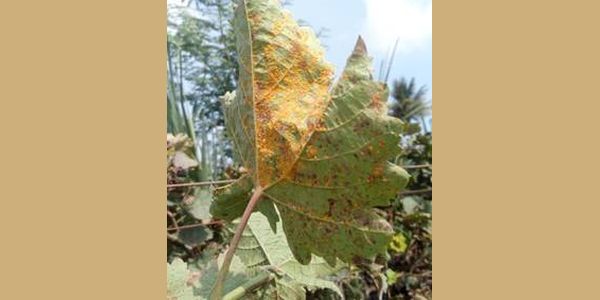

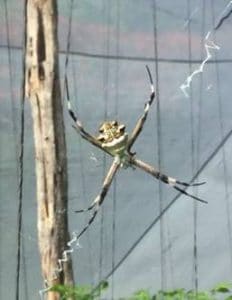
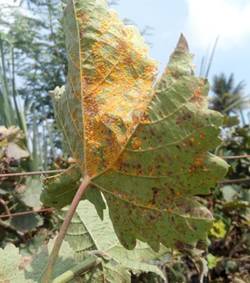
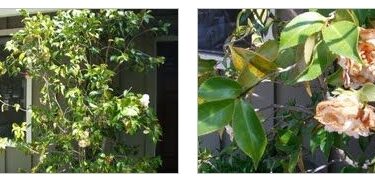
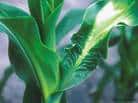

thanks sir
we have a small and planted about 70 rambutan trees. young leaves are eating by caterpilaars(?). we saw different types of worms. we are usinf neem oil ,tobacco leaves etc for controolling them. but if we delayed for 2 weeks for this application , all youn leaves are eatingby these worms.Please help us.
Hello Usha,
You could try Lac Caninum C200 once, 3 pills in 100 l of water, pour the plants with this water. Then 3 weeks later you shall use PULSATILLA C200 three times, each time 4 pills in 100 l of water. First date 3 weeks after Lac C., then an interval of 5 days, 2. treatment, then you wait 4 weeks until the last date.
Regards from Germany, Sabine
Dear radko sir
I am cultivating papaya and ginger i need medicine for papaya and ginger viruses and diseases . sir where to buy and how to use I need for 5 acres.
Dear Syed,
may I suggest some remedies? For your papaya: You could try Cuprum metallicum C200, two dates, one pill/tree at each date. Between the two dates there is an interval of 3 weeks.
And for the ginger: Aurum metallicum M, once 1 pill for about 5 plants.
I only know suppliers in Europa, for example Helios / GB or Remedia in Austria.
Could you send a feedback, if you had success with the remedies, please?
@Marita: As I work with individual remedies on some horse chestnut trees since two years, I will add some notes: Although I startet in Decembre 2014 (Winter), the tree was already more vital in spring 2015. Therefore it would be helpful, to start with the treatment right now.
For the costitution of the seven trees I suggest Aurum metallicum, M, twice 3 pills/tree. Between the two treatments there are 25 days. The second remedy is Mag. Met. LM VI, once,
3 drops / tree 4 weeks after the last Aurum date.
If you post a picture of the seven trees, I could suggest different remedies/potencies for each single horse chestnut.
Homeopathy is really a wonderful tool, it also heals polluted rivers and soils.
Regards from Germany, Sabine
one cocinia grandis (ivy gourd)is growing very good.there are good leaves and white flowers .fruits also come and grow but it falls after 4,5 days .WHAT MEDICINES SHOULD I USE SO THAT fruit will not falldown and grow steadily.